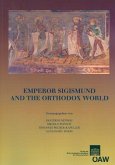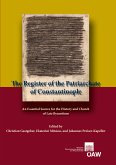"Heilige Berge und Wüsten" war Thema eines Round Table auf dem 21. Internationalen Kongress für Byzantinistik in London (August 2006). Der Arbeitskreis befasste sich mit geographischen Räumen im Umfeld von Byzanz als Orten, wo Ideale asketischer Lebensweise wie Stille, Schweigen, Meditation, Entfernung von allem Weltlichen, Kampf mit dem Teufel etc. zumindest ansatzweise verwirklicht werden konnten. In den hier gesammelten sieben Beiträgen, die thematisch an der Schnittstelle zwischen Spiritualität, mönchischer Organisation und Kirchenpolitik einerseits und den geographischen Rahmenbedingungen andererseits liegen, wird Klosterlandschaft in detaillierter Zusammenschau dargeboten. Bei der Auswahl der Beiträge wurde auf Vielfalt Wert gelegt: Koptische Klöster im Oberägypten des 6. Jahrhunderts. Die Mönchsberge Auxentios, Bithynischer Olymp und Kyminas (im Osten bzw. Süden Konstantinopels). Der Berg Galesion, wo der Klostergründer Lazaros nicht nur mit kirchlichen Autoritäten, sondern auch mit den eigenen Mitbrüdern in Konflikt geriet. Der Ganos an der Küste des Marmarameers, der bereits in der Antike als Heiliger Berg bekannt war und als Mönchsberg auch die türkische Landnahme überdauert hat. Das serbische Mönchstum, das im 12. -13. Jahrhundert einen gewaltigen Aufschwung erlebte und sich - von großen Klöstern abgesehen - auch in zahlreichen Höhlenkirchen manifestiert. Gregorios Sinaites, Lehrer der hesychastischen Gebetsmethode im 14. Jahrhundert, gründete im byzantinisch-bulgarischen Grenzbereich ein Kloster; dieses hatte nur kurzen Bestand und seine Lage wird immer noch diskutiert. Den Abschluss bilden die aus dem 9. und 10. Jahrhundert stammenden Klöster und Kirchen des sog. "georgischen Sinai" im Nordosten der Türkei. ... "Monastic mountains and deserts" was the topic of a panel at the 21st International Congress of Byzantine Studies held in London in August 2006. Holy mountains and deserts are exceptional places, secluded from the "world", places where communication with the divine is more intensive than elsewhere. Byzantine monasticism was characterized by the coenobite, lavriote and solitary ways of life. An important factor was the distinctive "morphology" of such locations, whose dramatic beauty and natural landscape features-precipices and caves-inspired contemplation and ascetic endeavours. In the seven contributions presented here, this phenomenon is illustrated by examples from different regions, either in the Byzantine Empire itself or in areas under Byzantine cultural influence. Panegyrics on the 6th century Pachomian archimandrite Abraham of Farshut supply information about the impact of the Council of Chalcedon on the coenobitic communities of Upper Egypt. Flourishing at times during the middle Byzantine period were the monastic mountains of Auxentios, Bithynian Olympia and Kyminas (to the east and, respectively, to the south of Constantinople). Lazaros, the founder and abbot of the monastic community on Mount Galesion had difficulties with ecclesiastical authorities as well as with his own monks. Already in antiquity, Ganos was well known as a holy mountain; the Turkish conquest of this region on the coast of the Sea of Marmara did not quench the Byzantine monasticism. In medieval Serbia, a powerful influence on the organization and nature of monasticism came from the holy mountain of Athos. Gregorios Sinaites, a prominent representative of Hesychasm in the 14th century, founded a monastery in the border area between Byzantium and Bulgaria; it existed for only a short time and its location is still disputed. The final contribution presents the 9th and 10th century churches and monasteries of the "Georgian Sinai", present-day Artvin Ili in Turkey.
Dieser Download kann aus rechtlichen Gründen nur mit Rechnungsadresse in A, B, BG, CY, CZ, D, DK, EW, E, FIN, F, GR, HR, H, IRL, I, LT, L, LR, M, NL, PL, P, R, S, SLO, SK ausgeliefert werden.









